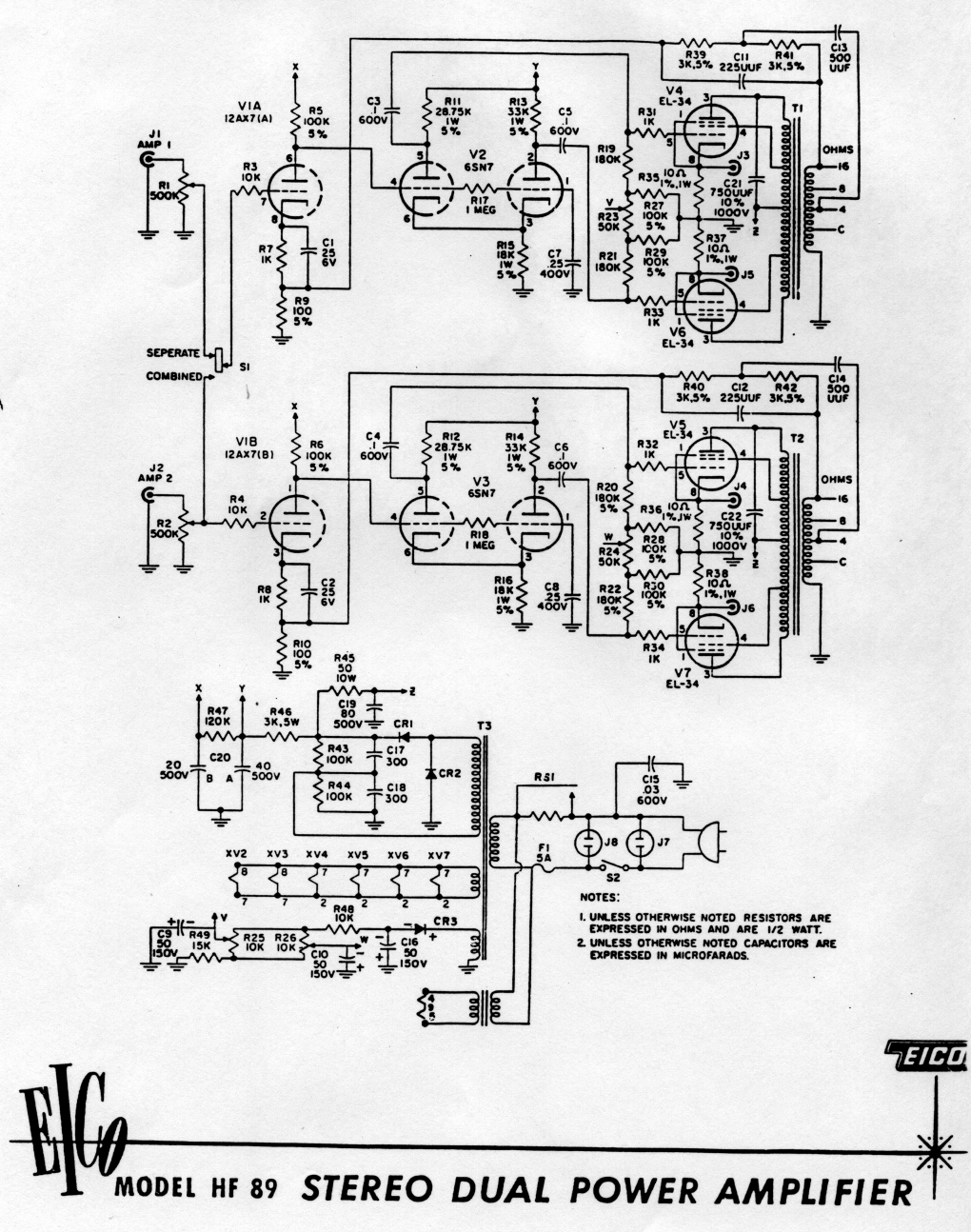goldear
Certifiable Audio Junkie
I'm thinking of doing this as a little project over Christmas break. But I have some questions for those who have some experience with this amp, or its brother the HF-87.
I already have a supply of good caps to replace the originals with. But what I'm really curious about is what your opinions are on changing-out the old Carbon resistors. My old modding rule of thumb tells me to replace these with MF whenever possible. But I'm cuirous if others have any differing opinions on this. I'm slightly concerned about making the amp too bright sounding by changing the parts recipe too much.
What about adding 100 Ohm screen resistors? Is this a good or bad idea? I know that these can really help extend output tube life, but I'm not sure what the downsides of doing this are. I'm considering doing this because this amp always seems to have the tubes right on the edge of meltdown.
I'm definitely planning on installing a polarized power cord. And I'm considering possibly trying dc heaters. But I plan to try ballancing the heaters ground reference through a couple of resistors to ground first.
I'm considering ordering a new power transformer to replace the original as well, but I think that I'm going to wait to do that later.
I'm also considering implementing a ground-bus to replace the chassis ground. But I've been advised not to do this by at least one person.
Any other ideas or suggestions? The plan is mostly simple upgrades because I like the way the the stock circuit sounds (with the exception of the hum). I'm not going to regulate anything. But would some fancy diodes for the rectifiers make sense?
I already have a supply of good caps to replace the originals with. But what I'm really curious about is what your opinions are on changing-out the old Carbon resistors. My old modding rule of thumb tells me to replace these with MF whenever possible. But I'm cuirous if others have any differing opinions on this. I'm slightly concerned about making the amp too bright sounding by changing the parts recipe too much.
What about adding 100 Ohm screen resistors? Is this a good or bad idea? I know that these can really help extend output tube life, but I'm not sure what the downsides of doing this are. I'm considering doing this because this amp always seems to have the tubes right on the edge of meltdown.
I'm definitely planning on installing a polarized power cord. And I'm considering possibly trying dc heaters. But I plan to try ballancing the heaters ground reference through a couple of resistors to ground first.
I'm considering ordering a new power transformer to replace the original as well, but I think that I'm going to wait to do that later.
I'm also considering implementing a ground-bus to replace the chassis ground. But I've been advised not to do this by at least one person.
Any other ideas or suggestions? The plan is mostly simple upgrades because I like the way the the stock circuit sounds (with the exception of the hum). I'm not going to regulate anything. But would some fancy diodes for the rectifiers make sense?
Last edited:


